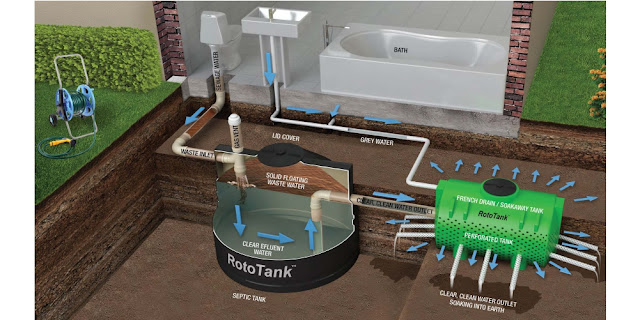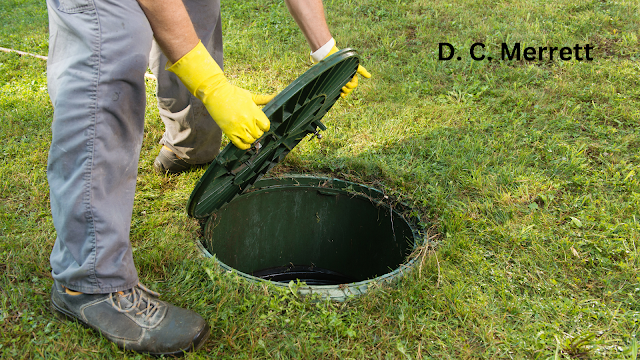What Happens When Your Septic Tank is Full?
Have you ever paused to think about what happens when your septic tank reaches its full capacity? It's not the most glamorous topic, but for homeowners with septic systems, it's essential knowledge. Understanding the signs, consequences, and preventive measures can save you from a messy, expensive situation. So, let's dive into the nitty-gritty of full septic tanks and how to manage them.
Understanding Septic Systems
At its core, a septic system includes a tank and a drainage field, working together to treat and dispose of your household wastewater. Here's a quick breakdown:
Tank: Where solids settle and begin to decompose.
Drain Field: Where liquid wastewater exits the tank and is further treated by the soil.
These components are designed to handle a specific volume of waste. Regular maintenance is crucial to keep everything flowing smoothly.
Early Warning Signs
Your septic system will usually send distress signals when it's getting full. Keep an eye out for these tell-tale signs:
Slow Drains: If your sinks and toilets drain slower than usual, it could indicate a full tank.
Unpleasant Odors: A stinky yard could mean your septic system is overflowing.
Pooling Water: Water gathering above your drain field is a red flag.
Gurgling Sounds: Strange noises from your plumbing system can signal a backup.
What Happens When Septic is Full?
When a septic tank reaches its capacity, it triggers a series of events that can lead to both immediate inconvenience and long-term damage. Understanding the sequence of these events and their implications is crucial for any homeowner relying on a septic system for wastewater management. Here's what happens when your septic system is full, broken down into detailed stages:
Immediate Effects
Backups and Slow Drains: The most immediate and noticeable effect of a full septic tank is the slowing down of drains throughout the house. Sinks, toilets, and showers may drain sluggishly, indicating that the wastewater has nowhere to go. In severe cases, sewage can back up into the home through drains, posing serious health risks and requiring immediate attention.
Bad Odours: A full septic tank can cause foul odours to emerge from the drains inside your home and around the tank and drain field outside. These smells are not only unpleasant but also an indication of potential sewage exposure to your family and the environment.
Pooling Water: Excess water from a full septic tank can surface above the drain field, leading to soggy ground or pools of water. This is a sign that the wastewater is not being properly absorbed and treated by the ground, often because the tank is too full to allow further filtration.
Gurgling Sounds: Unusual gurgling sounds from the plumbing system may be heard, caused by the struggle of water trying to flow through an overwhelmed system.
Long-term Consequences
Damage to System Components: Over time, an overfull tank can exert pressure on the entire septic system, leading to cracks in the tank itself or damage to the pipes and drain field. This can result in expensive repairs or even the need for a complete system replacement.
Contamination of Groundwater: A full septic tank can lead to the overflow of untreated sewage into the surrounding soil and groundwater, posing serious environmental health risks. This contamination can affect drinking water sources, local water bodies, and wildlife.
Health Risks: The overflow and backup of sewage due to a full septic tank can expose your household and neighborhood to harmful bacteria, viruses, and parasites. This exposure can lead to waterborne diseases and requires immediate remediation to prevent health hazards.
Increased Maintenance Costs: Ignoring the signs of a full septic tank can lead to more frequent and costly maintenance down the line. Regular pumping and inspections can prevent overflows, but once damage has occurred, repair costs can be significant.
Preventative Measures and Maintenance
The best way to handle a full septic tank is to prevent it from getting to that point in the first place. Regular maintenance, including routine pumping every 3-5 years (or as needed based on usage and system size), can keep your septic system functioning smoothly. Additionally, being mindful of water usage and what goes down the drain can significantly reduce the risk of overfilling the septic tank. Here's what you should do:
Pump Regularly: Depending on your household size and tank capacity, pumping should occur every 3-5 years.
Conserve Water: Less water use means less strain on your system.
Proper Waste Disposal: Avoid flushing non-biodegradable items down the toilet.
Protect Your Drain Field: Don't drive or build over it, and plant only grass above it.
Troubleshooting Common Issues
If you notice any early signs, here's how to tackle them:
Backups: Check for clogs first. If the problem persists, call a professional.
Odours: Ensure your tank is properly sealed. Persistent issues may require a system inspection.
Choosing a Septic Service Provider
Finding the right service provider is critical. Look for licensed professionals with good reviews and transparent pricing. Don't shy away from asking questions about their experience and services.
Conclusion
Regular maintenance and a keen eye for trouble signs can prevent the messy and costly aftermath of a full septic tank. Understanding what happens when septic is full is your first step towards a well-managed waste system. Keeping on top of these tasks ensures your home remains safe, clean, and far away from any septic system nightmares. Remember, a little prevention goes a long way in avoiding the big, stinky problems that come with a full septic tank.




Comments
Post a Comment